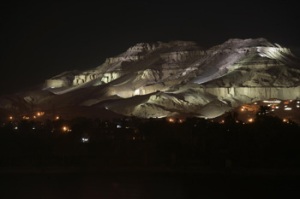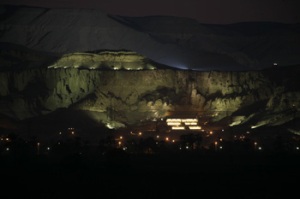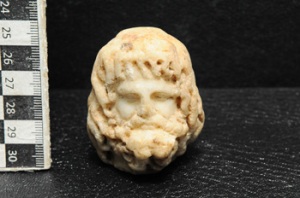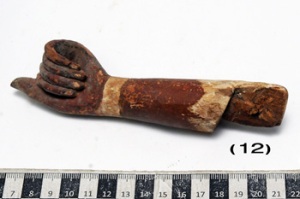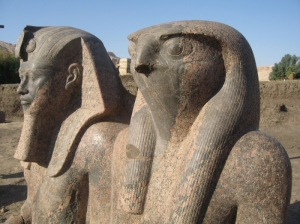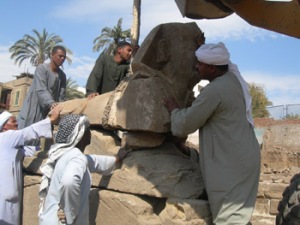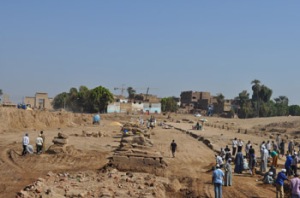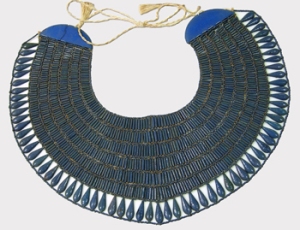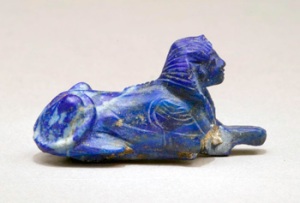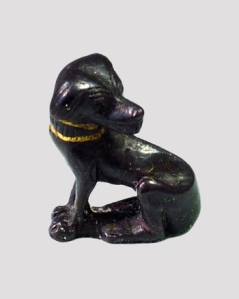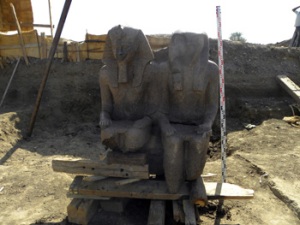LONDON — As self-help manuals go, the ancient Egyptian Book of the Dead has certainly stood the test of time.
For centuries, the 3,500-year-old guidebook offered Egyptians a step-by-step guide to the journey from this life to the next. It remains famous, if poorly understood — a spooky collection of arcane symbols, crocodile-jawed monsters and jackal-headed gods.
A major new exhibition at the British Museum hopes to shed new light on the book, which was not a single volume, but a series of spells and illustrations inked onto papyrus scrolls and designed to help the dead make the perilous journey to the afterlife.
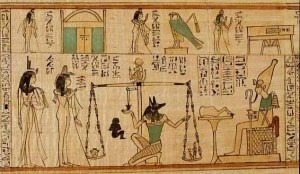
The Egyptian Book of the dead
The show seeks to dispel the modern notion — partly created by all the tombs, mummies and funeral masks — that ancient Egyptians were obsessed with death.
“They were not obsessed with death, as some people say — they were obsessed with life,” the exhibition’s curator, John Taylor, said Tuesday. “Most people would have died by 35, but they had quite a privileged life in many ways, and wanted to continue with it after death.”
The show, which opens Thursday and runs to March 6, is the first of three British Museum exhibitions looking at death and spirituality through the ages. A show next year looking at devotion in Medieval Europe will be followed in 2012 by one about the Muslim pilgrimage to Mecca, the hajj.
The Egyptian exhibition reveals a highly developed society with a complex theology — and an eye for commerce.
It winds, labyrinth-like, through the museum’s circular Reading Room, mirroring the journey humans were thought to take after death.
It was a spiritual obstacle course that saw the soul leave the mummified body of the departed and travel through the nether world. There it could be waylaid by scorching fires, poisonous snakes, wild animals and worst of all the Devourer — a demon with the head of a crocodile, the body of a lion and the hindquarters of a hippopotamus.
The final obstacle was a trial, at which the heart was placed on a set of scales and weighed against a feather. A light heart meant successful passage to the afterlife. A heavy heart, weighed down with sin, meant being thrown to the Devourer.
The book’s spells and illustrations, developed over centuries from about 1,500 B.C., were intended as a guide to overcoming these obstacles. There were 200 spells in all, from which wealthy Egyptians could pick and choose for their own custom-made Books of the Dead.
The exhibition brings together some of the treasures from the museum’s world-famous collection of Egyptian artifacts. There are mummies, gilded funeral masks and cedar coffins colorfully decorated in red and blue.
The star objects are the scrolls themselves, long rolls of papyrus covered with neat black and red hieroglyphic columns and illustrated with scenes of the afterlife.
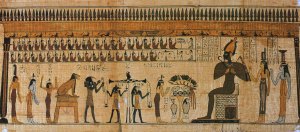
Book of the dead
They were rolled up and placed alongside mummies in their coffins. Spells also were inscribed on coffin walls, mummies’ shrouds and even their linen bandages.
Fragile and easily damaged by light, the scrolls are rarely displayed. The longest, a 120-foot (37-meter) scroll made for the daughter of a high priest about 3,000 years ago, has never been shown in public before.
The exhibition reveals the Egyptians’ spirituality — but also their knack for commerce. Only the most powerful individuals could afford their own custom-made scrolls, and mass-market options were available to the less well-off.
Archeologists can tell that Ani, a senior civil servant — scribe to the king — who died about 1275 B.C, bought his scroll off the shelf because his name has been inserted into blanks spots in the text.
Another exhibit is a basalt and gold amulet in the shape of a scarab beetle, with a blank space on the back where the buyer’s name could be written. It was one of a variety of objects that could be purchased as part of preparations for a good death.
“Over time, more things became essential,” Taylor said. “Somebody had a business sense there.”
Having completed the arduous journey, the successful person could spend the afterlife sailing with the sun god Ra in his boat across the sky, or dwelling with Osiris, god of the underworld. But the most favoured option was to settle in the Field of Reeds, a fertile riverside land that resembled an idealized version of the Egypt the deceased had left behind.
“The ultimate goal was going home,” Taylor said, “but without the illness, suffering and death.”
Memphis Tours Egypt Since 1955
Copy rights: google.com
Posted By : Shaimaa Ahmed
